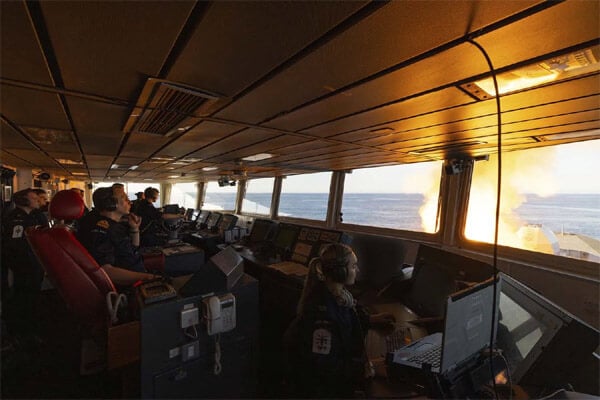Royal Navy Reports HMS Dragon Downed First Supersonic Sea-Skimming Target

The Royal Navy is reporting for the first time that one of its advanced Air Defence Destroyers, HMS Dragon, has downed a supersonic sea-skimming target. It was a test of a specially-modified Sea Viper missile system carried out during a month-long NATO exercise currently off Scotland.
During the exercise, HMS Dragon, the fourth of the Air Defence Destroyer class, commissioned in 2012, was working with other NATO ships conducting missile firing. For this test, they were working with an incoming high-speed target that was emulating one of the most advanced threats the Royal Navy could face. They said it was the first time the Royal Navy had confronted this type of target, which is significantly more challenging as it flies faster and carries out corkscrew and weave maneuvers.
The Sea Viper launched was a special telemetry version, designed to record measurements and valuable data to inform future operations. Just two and a half seconds after launch from HMS Dragon, the missile accelerated to more than four times the speed of sound (Mach 4), and high above the water, it maneuvers at G-forces which no human could withstand. It obliterated the supersonic missile in what the Royal Navy is calling “a historic first.”
A Friday fireball courtesy of @HMSDragon...
— Royal Navy (@RoyalNavy) May 16, 2025
In a burst of fire and smoke, the Type 45 destroyer launched a specially-modified Sea Viper missile at an incoming high-speed target which was emulating the kind of advanced threats seen around the globe today.
“The successful Sea Viper firing as part of Formidable Shield 25 is a huge moment for HMS Dragon,” said HMS Dragon’s Commanding Officer, Commander Iain Giffin. “Not only does it prove that Dragon’s world-leading air defense capability functions as it should following an extensive maintenance period, but it also proves our ability to integrate and operate alongside NATO allies and partners.”
The Royal Navy highlights that HMS Dragon has only recently returned to active service after a more than two-year major refit. Starting in March 2022 in Portsmouth, the warship was receiving major upgrades to its weapons systems while also proceeding with the Power-Improvement Project. Two of the original diesel engines were removed and replaced with three more reliable, more powerful, and cleaner engines, adding 4,000 hp to the vessel and upgrading electrical systems.
The Royal Navy also reported in 2022 that it was proceeding with a £300 million upgrade project for the destroyers’ main weapon system. All six Type 45s destroyers, including HMS Dragon, are receiving upgrades to Sea Viper and being fitted with the Sea Ceptor missile system. The Sea Viper Evolution, the Royal Navy said, covered the Aster 30 missile and the Sampson radar as well as the command-and-control system.

Each of the destroyers carries 48 Sea Vipers, which have a capability of taking out a target at up to 75 miles. The system uses the distinctive radar system, the Sampson and Long Range, which can track targets as far as 250 miles away. The Royal Navy said the upgrade was designed to deal with the increasing threats posed by anti-ship ballistic missiles.
“Seeing how far Dragon has progressed, both within the Warfare Department as well as the wider ship, is impressive,” said Lieutenant Commander Sarah Kaese, Dragon’s Senior Warfare Officer, who is on exchange from the Royal Australian Navy and is participating in the NATO exercise.
A year ago, then Defence Minister Grant Shapps highlighted that Dragon’s sister ship Diamond had deployed the Sea Viper during an attack by the Houthis in the Red Sea. Shapps pointed out it was the first time the system had been fired in hostilities since 1991 during the Gulf War.
The current demonstration was part of a NATO exercise involving 10 nations and more than 7,000 personnel, with ships, aircraft, and ground forces. The exercise started in Norway and has moved to Scotland. It will continue till the end of May.
